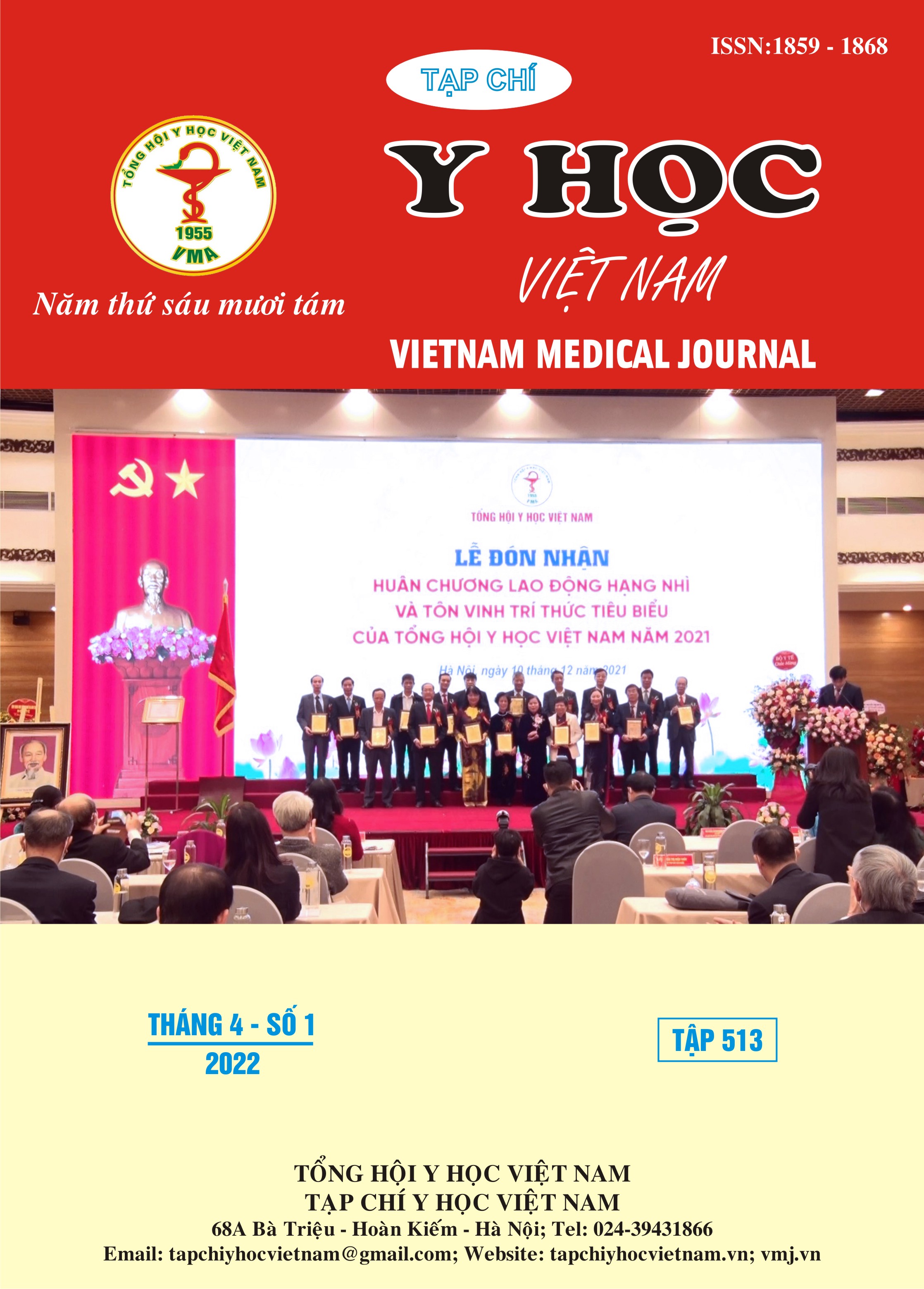THE RATIO APOB/APOA-I IS ASSOCIATED WITH LARGE ARTERY ATHEROSCLEROTIC STROKE
Main Article Content
Abstract
Objectives: to evaluate concentrations of apolipoprotein A-I, apolipoprotein B, apolipoprotein B/apolipoprotein A-I ratio in large artery atherosclerotic stroke patients. Determining the prognostic value of large artery atherosclerotic in ischemic stroke patients of the ratio apoB/apoA-I. Subjects and methods: control group (n=40) and 248 ischemic stroke patients (IS) were examined and treated at 108 Military Central Hospital from 10/2017-12/2019. The patient group were divided into 2 groups: large atherosclerotic artery stroke (n =146) and small artery occlusive stroke (n = 102). Cross-sectional descriptive prospective study method. Patients were examined clinically, diagnosed with imaging and tested apoA-I, apoB, apoB/apoA-I ratio on admission. Results: apoB concentration, apoB/apoA-I ratio was highest in the large artery atherosclerotic stroke (1.31±0.29 g/l; 1.06±0.34), followed by the small artery occlusive stroke (1.03±0.27 g/l; 0.7±0.23) and lowest in the control group (0.92±0.27 g/l; 0.59±0.2) with p < 0.05. The apoA-I concentration was highest in the control group (1.58±0.26 g/l), followed by the small artery occlusive stroke (1.51±0.28 g/l) and the lowest was in the large artery atherosclerotic stroke (1.28±0.23 g/l) with p <0.05. Multivariate analysis of large atherosclerostic group: ratio apoB/apoA-I with OR = 1.244; 95% (CI 95% 1.13-1.369); p < 0.05. The cut-off value was 0.995 (sensitivity: 64%; specificity: 83%). Conclusion: there were changes in apoA-I concentration, apoB concentration, apoB/apoA-I ratio in large artery atherosclerotic stroke. The ratio apoB/apoA-I is an independent predictor of large artery atherosclerotic stroke patients.
Article Details
Keywords
apoB/apoA-I, large atherosclerosis artery, ischemic stroke
References
2. Zhuo, Y., Wu, J., Qu, Y., et al., (2020), “Clinical risk factors associated with recurrence of ischemic stroke within two years”. Medicine, 99(26), e20830.
3. Kaneva A. M., Potolitsyna N. N., Bojko E. R., et al., (2015), “The apolipoprotein B/ apolipoprotein A-I ratio as a potential marker of plasma atherogenicity”. Dis Markers, 2015:591454.
4. As S., Sahukar S., Murthy J., et al., (2013), “A study of serum apolipoprotein A1, apolipoprotein B and lipid profile in stroke”. J Clin Diagn Res, 7(7):1303-1306.
5. Di Angelantonio E, Sarwar N, Perry P, et al., (2009), “Major lipids, apolipoproteins, and risk of vascular disease”. JAMA, 302:1993 - 2000.
6. Adams H. P., Jr., Bendixen B. H., Kappelle L. J., et al., (1993), “Classification of subtype of acute ischemic stroke. Definitions for use in a multicenter clinical trial. TOAST. Trial of Org 10172 in Acute Stroke Treatment”. Stroke, 24(1):35-41.
7. Walldius G., (2012), “The apoB/apoA-I ratio is a strong predictor of cardiovascular risk”. Lipoproteins - Role in Health and Diseases,
8. Holme I., Aastveit A. H., Hammar N., et al., (2009), “Relationships between lipoprotein components and risk of ischaemic and haemorrhagic stroke in the Apolipoprotein MOrtality RISk study (AMORIS)”. J Intern Med, 265(2):275-287.
9. Kostapanos, M. S., Christogiannis, L. G., Bika, E., et al., (2010), “Apolipoprotein B-to-A1 ratio as a predictor of acute ischemic nonembolic stroke in elderly subjects”. Journal of Stroke and Cerebrovascular Diseases, 19(6), 497-502.
10. Park JH, Hong KS, Lee EJ, et al., (2011), “High levels of apolipoprotein B/AI ratio are associated with intracranial atherosclerotic stenosis”. Stroke. 2011; 42:3040-46.


